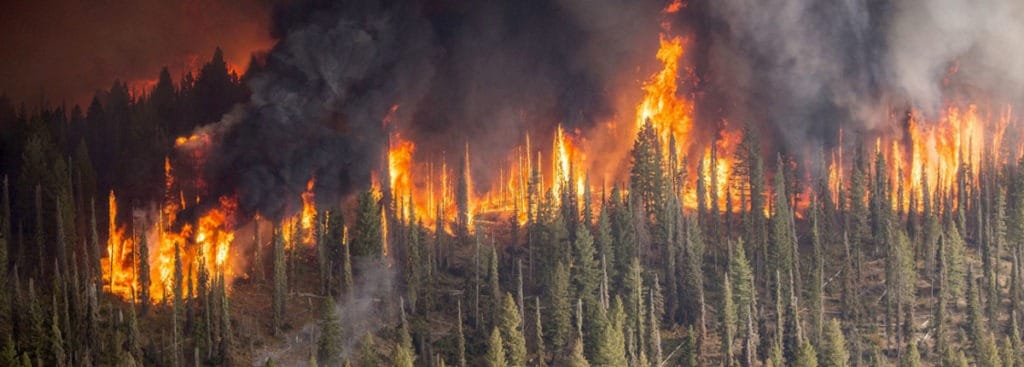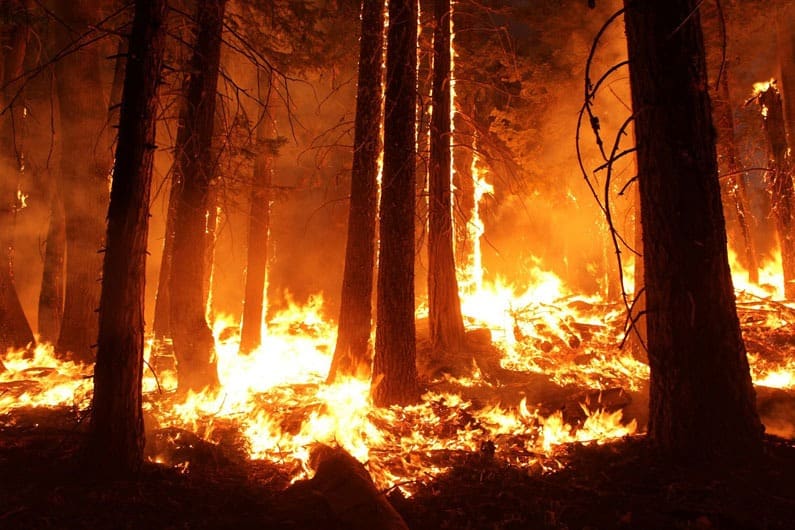
Because of the number of trees we have on our property, preventing fires became a huge concern, and that’s when this question arose.
Will forest management prevent wildfires? Yes, forest management can help to avoid wildfire by thinning overstocked forested areas. Plus pruning both live and dead branches hanging from trees, and practicing controlled burns. These controlled elements will reduce fuel from the ground level, and the control burns will help to clear excess underbrush and debris on the forest floor. When there is no ground fuel, there is no place for a fire to spread ground level. Even beyond these mentioned items and controlled burns, there are several other actions that a forest management plan can include.
In our Forest Management Plan, we talk about how we will help to reduce the spread of wildfire using specific practices as seen below.
Fire Resistant Vegetation
Get to know your plants because there are plants that are fire resistant that you may want to keep.
Fire-resistant plants don’t easily ignite from an ignition source or flame. These types of plants can be burned or killed when exposed to a wildfire’s heat, but their stems or foliage will not add to the intensity of the fire.
EXAMPLE of only a few:
Snowberry Plant
We have the Snowberry plant all over our property, and with further research, I learned that this hardy little native plant is fire resistant among many other attributes.
Wild Strawberry
We also have wild strawberries throughout some regions of our property, which I learned are also fire resistant.
A few other less-flammable brush species can include,
- Currant
- Serviceberry
- Maple
- Dogwood
- and Elderberry
Highly Flammable Plants
Along with fire-resistant plants there are is flammable vegetation that has specific characteristics to the plants with gummy sap, papery or flaky bark. Waxy, terpenes, or oil laced stems or twigs. A plant with that has this delicate, dry, dead material within the plant. These can include leaves, needles, or even twigs.
EXAMPLES INCLUDE:
- Manzanita
- Sagebrush
- Bitterbrush
- Ceanothus
How Can I Help To Slow Down a Wildfire
- Pick up excessive tree limbs, branches, and leaves from under each tree.
- Rake excessive piles of pine needles. Pine needles have a waxy coating making them one of the best fire starters in a forest with long-needled pine trees such as the Ponderosa.
- Trim branches, both alive and dead to remove any fuel ladder that could help a fire to climb from the forest floor or landscape to the tree canopy. Remove all out hanging branches 10 to 14 feet on younger trees and then 16 to 20 feet on mature trees from the landscape up. Or another suggested rule is to trim a tree 33% (or one third) of its height. If you have a 60′ tree tall you could technically remove limbs up to 20′ or less. Beware though; it’s best to prune live branches during the late fall and winter months. Dead tree branches can be removed anytime since there is no more sap flowing through them.
- Thin out smaller trees 6″ in diameter or less where ever there is an overgrowth of trees.
- Create new roads and trails throughout the property that will help to double as a firebreak.
Every year since 2000, an average of 72,400 wildfires burned an average of 7.0 million acres.

Hazards of Overstocked Forest
An overstocked forest says there are so many stands (trees) in a given space that there are not enough resources for all of them. This overstocked state causes a slowdown of growth for many trees are or will become suppressed.
This overstocked forest causes the understory to have no vegetation, just dry debris due to the overcrowded and competitive canopy. Smaller trees eventually die and then become fuel for potential wildfires.
Overstocked forests are more susceptible to disease through insect infestation, and once a tree’s health begins to decline.
This situation will get improved upon by thinning out crowded areas of your forest by doing the following.
Cut out any small stands that are attempting to compete below the canopy of much larger trees.
Remove any buildup of slash and other potential fuel from dead limbs or trees that have fallen over.
Remove any other excess debris such as pinecones and needles. However, it’s better to have a small number of needles than to have dirt. Once needles get removed, weeds will begin to grow, thus creating a new issue of fire fuel for the future.
Healthy and mature trees should be 20 to 25 feet apart from each other where younger and smaller trees are okay to be 10 to 15 feet apart as a general rule.
Snags and Ground Coverage
Snags are standing trees that are dying or are dead. With our property location, the forest department recommends two to three snags per acre for local wildlife. Anything beyond that should be cut down and removed. These dead trees act like a home, hiding place and food source for varying wildlife species using nearly every part of the snag (dead tree) in all stages of its decay.
As for ground coverage, if a fallen snag, now called a log, has been lying long enough that is has started decaying, it is best to leave it to aid the local ecosystem. Even a few non-decaying logs laying on the forest floor can act as shelter or a place to hide for individual animals in the forest.
When Felling Trees
To avoid potential wildfire fuel, be sure to control any slash piles you create on your property and burn them during late fall winter and early spring. Always check with your local fire department for any special permits or requirements before starting any burn. With our property location, we’re required to get a burn permit from our local fire district no matter what time of year. We can burn one pile of slash at a time with a few requirements.
The pile cannot be any bigger than ten feet in diameter.
Water minimum is at least five gallons or more.
Other slash piles cannot be within 500 feet of the current burn.
Healthy saved trees for future harvest cannot be within 50 feet.
Thank you for visiting!
If you liked this article, please check out another article on this website, WoodsyAcres.com.
